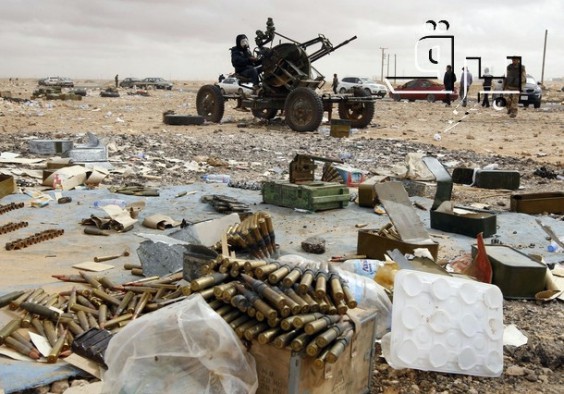Lack of Media Coverage Compounds Violence in Libya
by Committee to Protect Journalists text by Fadil Aliriza / May 7, 2015 / No comments

Lack of information compounds the violence in Libya. Photo via Flickr user: BRQ Network.
Near the end of August 2014, Egypt and the United Arab Emirates launched airstrikes against what were characterized as Islamist-allied militias fighting near Tripoli, Libya. Or maybe they didn’t. The New York Times broke the story on August 25, 2014; Egypt denied it, the UAE didn’t comment, and U.S. officials made seemingly conflicting statements.
In Libya, the facts are still hostage to politics. The Tobruk-based government and forces under the umbrella of “Operation Dignity” that are allied with Egypt parrot Egypt’s denial; meanwhile, the competing Tripoli-based government, tied to the “Operation Dawn” military coalition that was allegedly targeted in the airstrikes, sticks with the Times’ version.
Increasingly, information in and about Libya is colored by the conflicting narratives of warring parties rather than based on facts investigated and confirmed by professional reporters. One immediate cause of this phenomenon is the dearth of reporters, and one immediate consequence is misinformation that further fuels violence. That violence in turn kills, impedes, or scares journalists away, ensuring that the cycle continues.
The danger of reporting in Libya first hit home for the international press with the deaths by mortar fire of two of its own during the revolution in 2011: photojournalists Tim Hetherington and Chris Hondros. Freelance journalist James Foley, who was executed in Syria in August 2014 by the group calling itself the Islamic State, had been captured by pro-regime forces in Libya in 2011, while covering the war, in an incident in which a colleague, Anton Hammerl, was killed.
Libyan journalist Mohammed al-Nabbous, who started Libya Al-Hurra TV at the start of the uprising against the regime, was also killed that year. Since then, and in alarming numbers, the vast majority of journalists who are killed, threatened, or kidnapped in Libya are locals.
Before the revolution, there was virtually no independent press in Libya. Muammar Qaddafi’s authoritarian state violently suppressed anyone brave enough to speak out. The toppling of the regime created a space in which young journalists and media outlets could operate in relative freedom and start learning the craft of reporting; however, it also created a space in which armed groups could operate freely and consolidate their power through violence. As a result, the biggest threat to journalists now comes from a diverse array of armed groups operating outside central control who punish journalists they see as working against their interests.
Read the rest of this post.
Read more from Committee to Protect Journalists’ 2015 edition of “Attacks on the Press.”
This article was originally published on April 27, 2015 at Committee to Protect Journalists. It is republished with CPJ’s permission.




